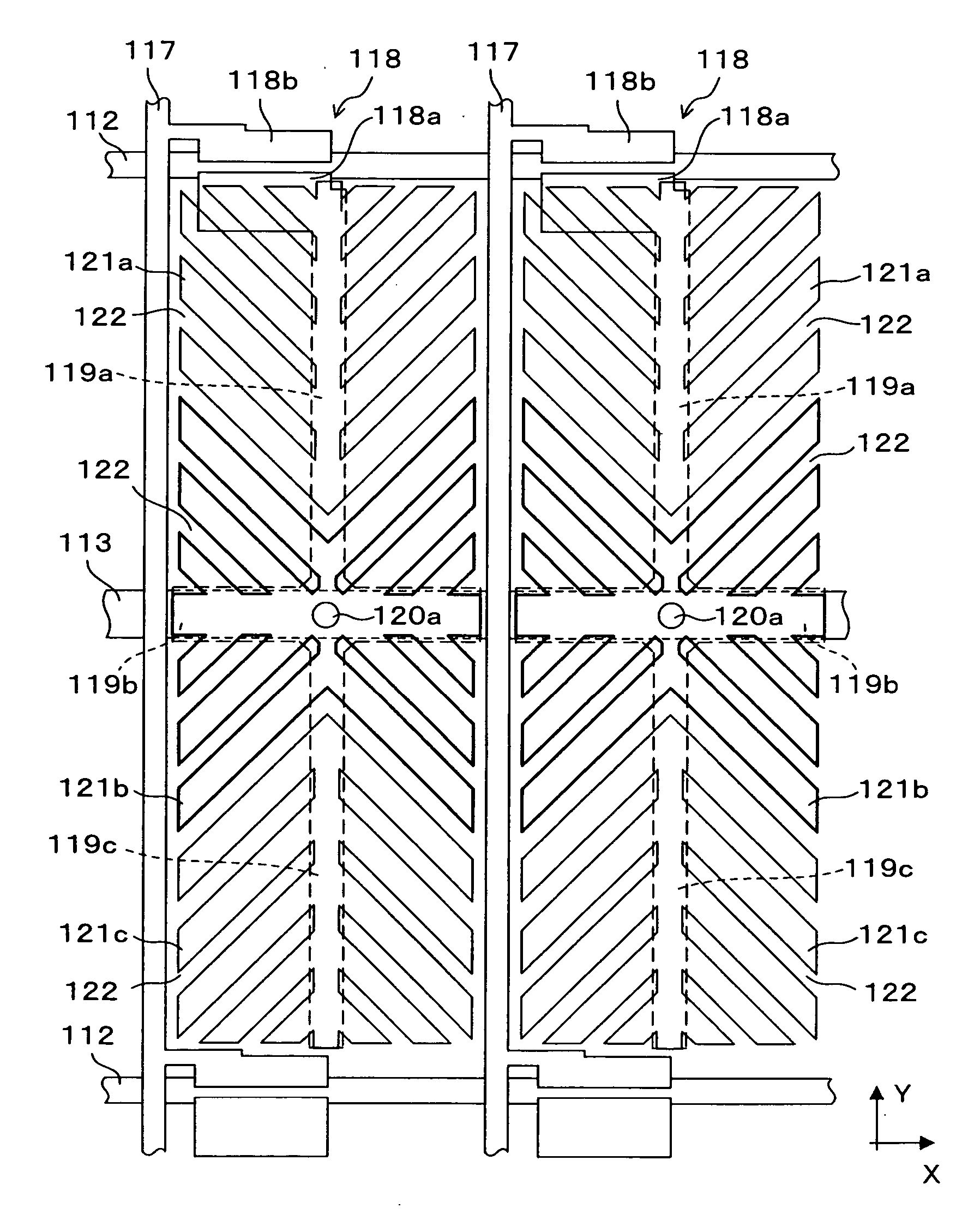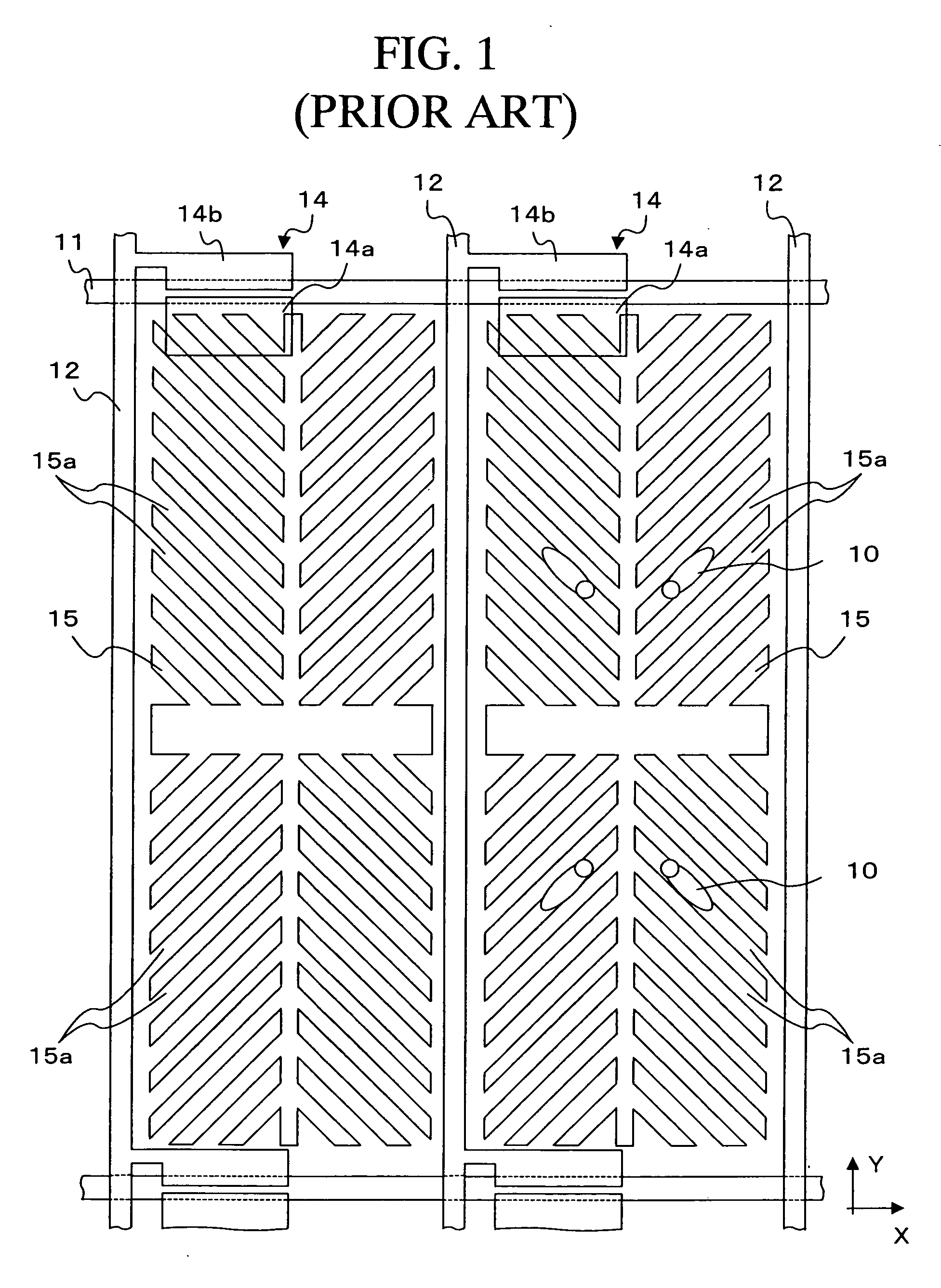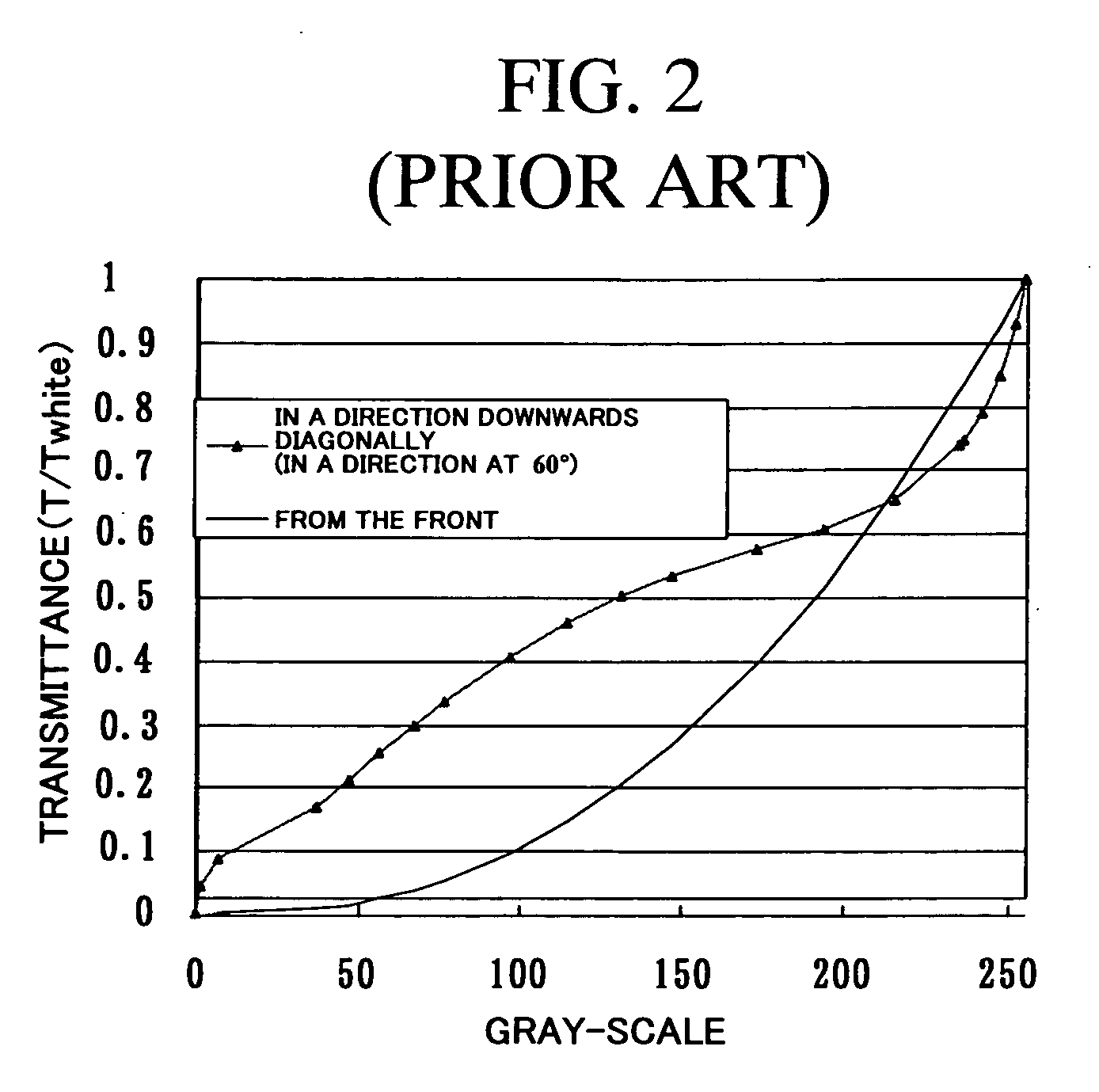Liquid crystal display device
a liquid crystal display and vertical alignment technology, applied in optics, non-linear optics, instruments, etc., can solve the problems of insufficient viewing angle characteristics of tn mode liquid crystal display devices, extreme deterioration of tone and contrast, orientations respectively, etc., and achieve the effect of substantial aperture ratio and better display quality
- Summary
- Abstract
- Description
- Claims
- Application Information
AI Technical Summary
Benefits of technology
Problems solved by technology
Method used
Image
Examples
first embodiment
[0083]FIG. 3 is a plan view of a liquid crystal display device according to a first embodiment of the present invention. FIG. 4 is a cross-sectional schematic view of the liquid crystal display device according to the first embodiment. Incidentally, FIG. 3 shows two picture element regions.
[0084] As shown in FIG. 4, a liquid crystal panel 100 is constituted of: a TFT substrate 110; an opposing substrate 130; and a liquid crystal layer 140, made of liquid crystal with negative dielectric anisotropy, which is contained in the space between the TFT substrate 110 and the opposing substrate 130. Polarizing plates 141a and 141b are arranged respectively on the two sides in the thickness direction of this liquid crystal panel 100. The liquid crystal layer 140 includes a polymer which has been formed in the following process. Polymer components (monomer or oligomer) are added to the liquid crystal, and beams of ultraviolet light are irradiated to the polymer components. Thereby, the polyme...
second embodiment
[0122]FIG. 6 is a plan view showing a liquid crystal display device according to a second embodiment of the present invention. Incidentally, if components and equivalents in FIG. 6 were the same as, or similar to, those in FIG. 3, the components and equivalents in FIG. 6 are denoted by the same reference numerals and symbols as those in FIG. 3 are. Thus, detailed descriptions will be omitted for the same, or similar components and equivalents in FIG. 6.
[0123] In the case of this embodiment, two sub picture element electrodes 152a and 152b are formed in a single picture element region. The sub picture element electrodes 152a (directly-connected picture element electrode) is arranged in a range upper in the Y axis direction in each of the picture element regions. The sub picture element electrode 152a is divided into four fields (domain control fields) by the center line in parallel with the X axis and the center line in parallel with the Y axis. A plurality of slits 153 extending in...
third embodiment
[0132]FIG. 7 is a plan view showing a liquid crystal display device according to a third embodiment of the present invention. If components and equivalents in FIG. 7 were the same as, or similar to, those in FIG. 3, the components and equivalents in FIG. 7 are denoted by the same reference numerals and symbols as those in FIG. 3 are. Thus, detailed descriptions will be omitted for the same, or similar, components and equivalents in FIG. 7.
[0133] In the case of this embodiment, too, two sub picture element electrodes 162a and 162b are formed in a single picture element region. The sub picture element electrode 162a (directly-connected picture element electrode) is arranged in a range upper in the Y axis direction in each of the picture element regions. The sub picture element electrode 162a is divided into four fields (domain control fields) by the center line in parallel with the X axis and the center line in parallel with the Y axis. A plurality of slits 163 extending in a directi...
PUM
| Property | Measurement | Unit |
|---|---|---|
| angle | aaaaa | aaaaa |
| angle | aaaaa | aaaaa |
| angle | aaaaa | aaaaa |
Abstract
Description
Claims
Application Information
 Login to View More
Login to View More - R&D
- Intellectual Property
- Life Sciences
- Materials
- Tech Scout
- Unparalleled Data Quality
- Higher Quality Content
- 60% Fewer Hallucinations
Browse by: Latest US Patents, China's latest patents, Technical Efficacy Thesaurus, Application Domain, Technology Topic, Popular Technical Reports.
© 2025 PatSnap. All rights reserved.Legal|Privacy policy|Modern Slavery Act Transparency Statement|Sitemap|About US| Contact US: help@patsnap.com



